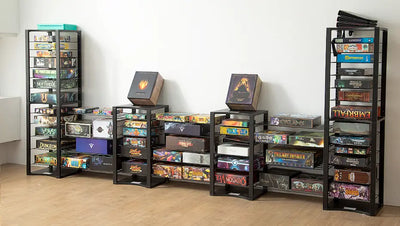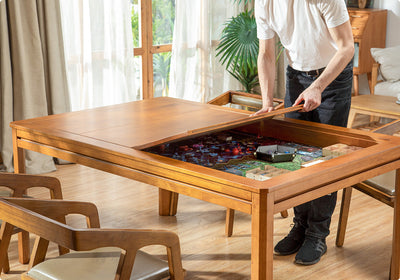How to Choose the Right Board Game for Different Types of Players
Board games do more than fill an evening—they connect people, spark laughter, and create shared stories. The key to a great session is matching the game to the people at your table. This guide shows you how to choose well for families, couples, and hardcore gamers, with clear selection criteria, example titles, and setup tips that elevate the experience.
Table of Contents
How to use this guide
Skim the section that matches your group, note the what to look for checklist, then pick from the example titles. If you’re unsure, start with the shortest playtime and simplest rules—momentum beats ambition for most tables.
Family Game Nights: Simple, Fun, Inclusive

Family sessions work best when rules are quick to teach, turns move briskly, and everyone—kids, teens, and adults—stays engaged. Cooperative or team modes reduce pressure and keep the mood upbeat.
What to look for
- Easy-to-learn rules: Aim for a 5-minute teach and a quick practice turn.
- Short playtime: 20–45 minutes keeps energy high and allows rematches.
- Co-op or team options: Bonding over shared goals beats “player elimination.”
Great starting points
- Ticket to Ride — Gentle route building that introduces planning without overload.
- Codenames — Flexible wordplay that scales to mixed ages and group sizes.
- Dixit — Imaginative storytelling with accessible rules and beautiful art.
Setup tip: Use a table with cup holders or a small side cart so snacks and drinks stay off the play area. A topper or playmat makes cleanup faster and protects cards from crumbs and condensation.
Couples: Intimate and Strategic Fun

Evenings for two shine with games designed specifically for head-to-head play. Look for titles that balance competition with connection—tactile components, clear feedback, and just enough depth to invite a rematch.
What to look for
- Two-player focus: Tuned for balance and tension without tacked-on variants.
- Moderate strategy: Decisions should matter, but analysis should never stall conversation.
- Thematic pull: A shared narrative or charming theme amplifies the “date night” feel.
Great starting points
- Jaipur — Quick trading duel with satisfying tempo and tactical choices.
- Fog of Love — Role-play a relationship arc; playful, conversational, and memorable.
- Patchwork — Relaxed puzzling with surprising depth and a tight economy.
Setup tip: A soft playmat reduces glare, and supportive armrests help for multi-round sessions. Keep a small tray for tokens so the surface stays uncluttered and cozy.
Hardcore Gamers: Strategy, Depth, Challenge

Experienced groups thrive on layered mechanisms, long-term planning, and asymmetric roles. These games reward preparation: table space, lighting, and component management matter as much as the rules teach.
What to look for
- Complexity ceiling: Multi-system interactions that stay coherent under pressure.
- Longer playtime: Expect 2–4 hours; plan breaks and table ergonomics.
- Replayability: Variable setups, branching scenarios, or evolving campaigns.
Great starting points
- Gloomhaven — Persistent campaign with tactical combat and character growth.
- Twilight Imperium — Grand strategy in space; epic scope for an all-day event.
- Terraforming Mars — Engine-building with robust interaction and expansion support.
Setup tip: Use player trays, card stands, and a neoprene mat to speed upkeep. For marathon sessions, ensure seating, lighting, and a clear “resource lane” keep fatigue low and focus high.
Final thoughts
Choosing well is about people first, boxes second. Match complexity and playtime to your group, set a clean and comfortable table, and let the game facilitate the mood you want—silly, cozy, or intense. With a few thoughtful choices, you’ll create nights that everyone wants to repeat.
by Layla





